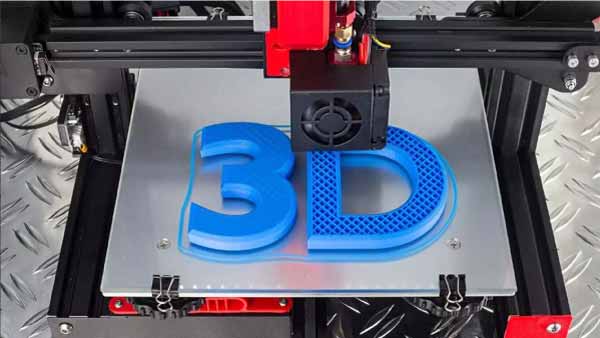3D printing is an additive manufacturing process in which a three-dimensional object is created from a digital model. Instead of cutting or carving material from a solid part, the 3D printer deposits successive layers of material until the desired object is created.
Most 3D printers use plastic as a building material, although other materials such as metal, ceramic and wood can also be used. 3D printers are available in a variety of sizes and types, from small desktop models to large industrial machines.
The applications of 3D printing are very diverse, ranging from creating prototypes and spare parts to manufacturing custom medical prostheses and creating unique pieces of art and jewelry. In addition, 3D printing has changed the way many products are manufactured as it allows for custom and on-demand production rather than mass mass production.
Prototyping
3D printing is a very useful tool in prototyping for a wide variety of applications. Prototypes are preliminary models of products or components that are used to evaluate their design and functionality before mass production. 3D printing enables rapid prototyping, which significantly reduces the time and costs associated with the product development process.
Designers and engineers can use 3D printing to prototype a variety of materials, allowing them to evaluate the look, ergonomics and functionality of the product early in the development process. In addition, 3D printing also allows the creation of custom and complex prototypes that cannot be manufactured with other techniques.
It is widely used in the manufacturing industry for product prototyping in a wide variety of sectors, including automotive, aviation, electronics, medicine, and fashion, among others. 3D printed prototypes can be evaluated by customers and stakeholders for feedback prior to mass production, which can improve final product quality and reduce costs associated with correcting errors in production.
Creation of spare parts
It is very useful in creating spare parts for a wide variety of products, which can save time and costs compared to traditional parts manufacturing.
With 3D printing, manufacturers can digitally scan or model the spare part they need and then print an exact replica on the right material. This is especially useful for parts that are no longer manufactured or difficult to find, as 3D printing allows the creation of customized and unique parts.
3D printing also allows the creation of spare parts faster than traditional manufacturing methods, as it does not require the creation of specific tools or molds for production. In addition, 3D printing can also reduce manufacturing costs, as it can be used to create spare parts in small or individual batches, reducing material waste and the need for storage.
The creation of spare parts with 3D printers is used in a wide variety of sectors, including the automotive industry, machinery manufacturing, electronics and medicine, among others. 3D printing is also very useful for the creation of customized parts for high-tech equipment and complex machinery, as it allows the creation of specific parts for the individual needs of each customer.
Manufacture of personalized medical prostheses
3D printing is also increasingly used in the manufacture of custom medical prosthetics, including prosthetic limbs, hearing aids, dentures, and other medical devices.
It allows the creation of personalized and precise prostheses, which fit perfectly to the patient’s body and offer a high level of comfort and functionality. The ability to print custom parts in different materials allows physicians and manufacturers to tailor prosthetics to each patient’s individual needs and preferences.
You can also reduce the costs associated with manufacturing custom medical prostheses by reducing the time and costs associated with creating case-specific tools and molds. In addition, the ability to print spare parts or prosthetic components individually can reduce the time and costs associated with replacing damaged or worn parts.
It has revolutionized the manufacture of customized medical prostheses by offering a precise, efficient and cost-effective solution for the creation of customized prosthetics and medical devices.
Creation of pieces of art and jewelry
It is increasingly used in the creation of pieces of art and jewelry. The ability to print on a wide variety of materials and shapes allows artists and designers to experiment with new shapes and designs and create unique custom pieces.
3D printing also allows for the creation of personalized and detailed jewelry pieces, allowing jewelers to print accurate and detailed models of their designs before mass production. This allows designers and jewelers to make fine adjustments to their designs before producing the final pieces, which can save time and reduce the costs associated with producing custom jewelry.
It allows the creation of detailed and complex pieces of art that would be very difficult or impossible to create by hand. Artists can use 3D printing to print art pieces on a wide variety of materials, including plastics, metals, ceramics and more, allowing them to experiment with new materials and textures.
It offers artists and designers a wide variety of new creative possibilities in creating custom art and jewelry pieces.


